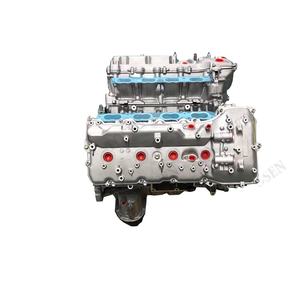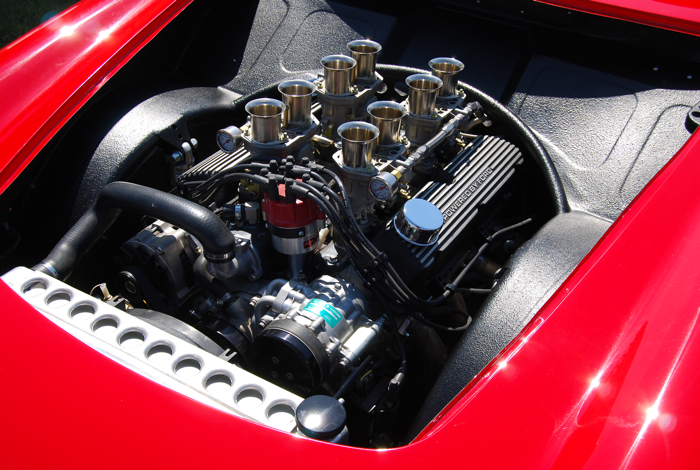Just how to Select the Right Opel Corsa Engine for Your Vehicle
Just how to Select the Right Opel Corsa Engine for Your Vehicle
Blog Article
Exploring the Inner Functions of a Compact Automobile's Engine System
As vehicle drivers, we often consider provided the intricate processes that occur within the confines of our vehicle's engine system. The portable yet intricate machinery that pushes us ahead is a marvel of engineering precision and control. From the controlled explosions in the burning chamber to the precise timing of gas shot, every element plays a critical role in the smooth operation of the engine. In this expedition of a portable vehicle's engine system, we will certainly unravel the internal functions of this mechanical harmony, clarifying the mysteries that drive us forward on our day-to-day journeys.
Burning Process Review
The burning process in a compact lorry's engine system is a critical system that efficiently transforms fuel into power to power the car. This process takes place within the combustion chamber of the engine, where gas and air mix, fire up, and produce regulated surges. The combustion process includes four major stages: intake, exhaust, power, and compression.
Throughout the consumption stage, the piston moves downward, attracting in a mixture of air and gas right into the burning chamber. The next phase, compression, involves the piston moving upwards, pressing the air-fuel mix to increase its potency. Subsequently, in the power stage, the trigger plug ignites the pressed mix, resulting in a fast development of gases that requires the piston back down. This descending activity creates the power needed to drive the lorry. Ultimately, in the exhaust phase, the burnt gases are gotten rid of from the burning chamber through the exhaust valve, preparing the chamber for the following cycle. This cyclic combustion process is basic to the operation of a small vehicle's engine system, ensuring efficient power conversion for propulsion.
Piston and Cylinder Interaction

The piston's specific fit within the cyndrical tube is vital for preserving ideal compression and preventing energy loss during combustion. Limited clearances between the piston and cylinder walls guarantee reliable sealing, enabling the piston to relocate efficiently without enabling gases to leak past. Correct lubrication is also essential to reduce friction and use in between these components, enhancing durability and performance.
Moreover, the design and materials made use of in manufacturing the piston and cylinder effect engine effectiveness and durability. Modern engines often use lightweight yet sturdy view it now products like aluminum alloys for pistons and cyndrical tube liners to minimize inertia and boost thermal efficiency. In general, the unified interaction between the piston and cylinder is essential to the engine's capability and general performance.
Gas Shot System Functionality
Fuel injection systems in portable vehicle engines play a critical function in specifically delivering fuel to the burning chamber for reliable and controlled ignition. The gas injection system functions by injecting gas into the combustion chamber at the optimum moment throughout the engine's procedure (opel corsa engine). This exact timing ensures that the gas blends evenly with the air for correct combustion, causing enhanced fuel performance and minimized discharges
There are largely two kinds of fuel injection systems used in portable automobile engines: port fuel injection (PFI) and straight fuel shot (DFI) PFI systems infuse fuel into the intake port prior to the consumption shutoff, while DFI systems inject fuel directly right into the burning chamber. Both systems have their advantages, with DFI using far better fuel atomization and PFI offering an extra cost-effective service.
Comprehending Engine Cooling Systems
Efficient procedure of a small car's engine depends greatly on the efficiency of its cooling systems. The air conditioning system in a portable automobile commonly consists of numerous elements working together to regulate the engine temperature level. Comprehending these engine air conditioning devices is vital for keeping the efficiency and durability of a portable automobile's engine system.

Exhaust System Components Explained
The ideal functioning of a compact car's engine air conditioning systems relies on a complementary system referred to as the exhaust system, which consists of numerous vital components for making sure reliable emissions and engine efficiency. The exhaust system consists of parts such as the exhaust manifold, catalytic converter, muffler, and tailpipe. The exhaust manifold gathers exhaust gases from the engine's cyndrical tubes and blog here paths them to the catalytic converter. The catalytic converter after that converts dangerous pollutants in the exhaust right into less harmful discharges before launching them with the muffler and tailpipe.
One important part of the exhaust system is the oxygen sensor, which checks the oxygen degrees in the exhaust gases to help control fuel consumption and guarantee ideal engine efficiency. opel corsa engine. Furthermore, the resonator might be present in some exhaust systems to decrease sound degrees. In general, the exhaust system plays a vital function in preserving engine efficiency, lowering harmful exhausts, and ensuring a quieter driving experience for compact vehicle owners

Final Thought
To conclude, the small car's engine system is a complex combination of components that collaborate to help with the burning procedure, convert gas right into power, and eliminate waste gases. Understanding the internal operations of the engine system, including the piston and cylinder communication, gas injection system, engine cooling devices, and exhaust system parts, is important for preserving optimum performance and effectiveness of the car.
The burning procedure in a portable lorry's engine system is a critical mechanism that effectively transforms fuel into energy to power the automobile.Gas shot systems check it out in small automobile engines play a crucial function in exactly supplying gas to the burning chamber for effective and regulated ignition.There are largely 2 types of gas shot systems made use of in portable automobile engines: port gas injection (PFI) and direct gas injection (DFI) Comprehending these engine cooling mechanisms is crucial for keeping the efficiency and long life of a small automobile's engine system.
The ideal functioning of a compact car's engine cooling systems depends on a corresponding system understood as the exhaust system, which comprises various vital elements for guaranteeing reliable discharges and engine efficiency.
Report this page